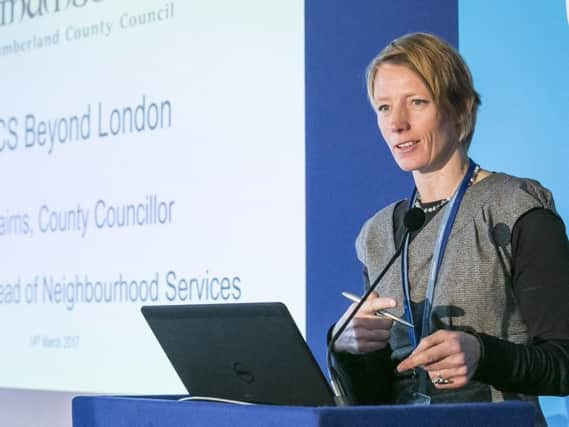Major breakthrough in 10-year campaign


The European Parliament has approved a change in the law for lorry design so that the driver would have much better visibility of the road, cyclists and pedestrians.
Additional safety features such as a crumple zone, and deflection bumpers will also mean that the roads will be much safer for all.


Advertisement
Hide AdAdvertisement
Hide AdIt is a huge moment for Kate Cairns who has been campaigning since her sister, Eilidh, was tragically killed by a lorry in London in 2009.
In that time she has brought about policy and legislative change at European, national and local level.
Kate, founder and leader of the See Me Save Me Campaign (SMSM) said: “I am so proud that this new law is eventually coming to fruition.
“Supporters of SMSM have worked tirelessly over a decade to make change. In the beginning, I was a lone voice, now national campaign groups and transport organisations across the country and EU have joined the call.
Advertisement
Hide AdAdvertisement
Hide Adgroups and transport organisations across the country and EU have joined the call. This is an incredible achievement.
“I thank all those (including the Gazette) who have supported our campaign by donating, signing petitions or writing to their MPs and MEPs. It takes time, effort and great tenacity to make change.
“Eilidh Cairns inspired this in so many people, those who knew her, and even those who didn’t.
“However, there are still over 500 members of the public killed or seriously injured under the wheels of HGVs across the UK every year.
Advertisement
Hide AdAdvertisement
Hide Ad“More work needs to be done and I welcome all support to the SMSM campaign.
“With respect to businesses and local authorities, I call upon planning departments, infrastructure clients and operators to adopt the CLOCS standard.
“This is an industry standard (Construction Logistics and Community Safety) in response to the SMSM campaign which has been developed over the last five years to manage HGV risk.
“These crashes are not ‘accidents’ they are totally avoidable. We need to identify and mitigate the risk, like we do any other.”
Advertisement
Hide AdAdvertisement
Hide AdThe next part of the process is for all the EU member states to decide on whether this is to be mandatory, or optional. Lorry companies are reluctant to change, and apply pressure on the EU governments.
The proposals also need approval by each EU country. They will then be phased in, due to become mandatory throughout the EU by 2022.
This will apply to new models sold from September 2025 and all models sold from September 2028.
Eilidh, from Ellingham, was just 30 when she died after being knocked off her bike by a heavy goods vehicle while she cycled to work.
Advertisement
Hide AdAdvertisement
Hide AdIn 2010, Kate and her family and Eilidh’s friends went to Strasbourg with MEP Fiona Hall with a Written Declaration 81 calling for mandatory cameras and sensors in lorries.
She went back to Brussels in 2013 with Transport for London who were calling for a change in cab design to make cyclists and motorcyclists more visible. Because drivers have up to six different mirrors, cameras and sensors to look in at any one time, making the cab lower and the window bigger reduces blind spots.
“This vote is a culmination of all my work,” said Kate.